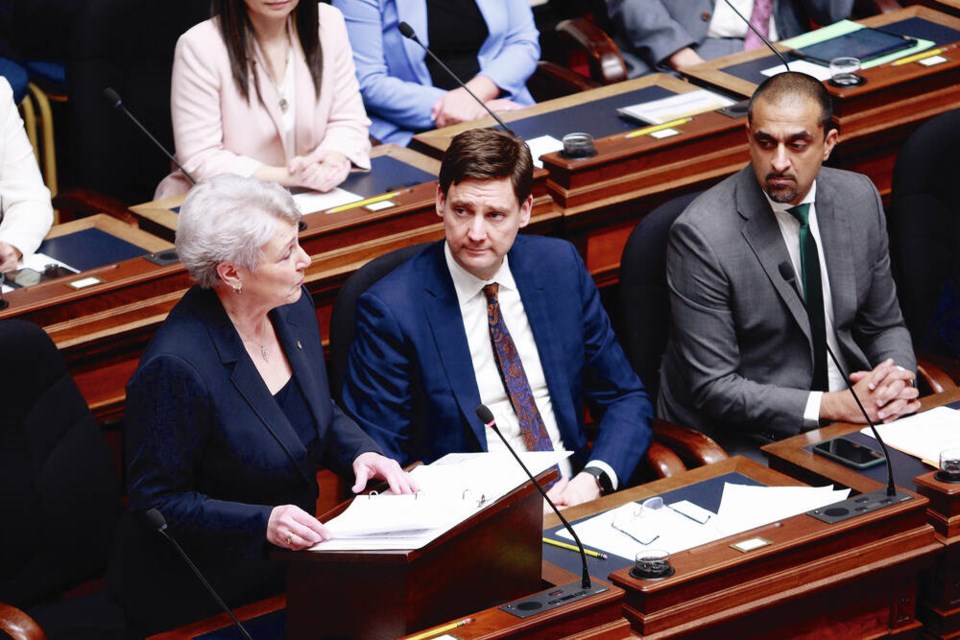In a breathtaking political gamble, Thursday’s budget took the province further into debt than at any time in history.
There was more money for child care (a 19% increase), healthcare (a 14% increase) and education (a 9% lift).
Some 340,000 low-income families will receive a 25% increase in their family benefit, while there is more money for house, school and hospital construction.
To pay for these expenditures, enormous deficits are forecast. In the coming year the deficit is put at $7.9 billion, up from $5.9 billion last year.
The red ink reaches to the three-year horizon, with deficits of $7.8 billion next year and $6.3 billion in 2026-27.
We call this a political gamble, in part because the financial costs of these policies are troubling.
When the NDP took office in 2017, the taxpayer supported debt load stood at $43 billion. By the end of the present three-year plan, that figure will reach $126 billion.
Borrowing on that scale comes at a cost. While interest charges were just $2.7 billion in 2017, they are forecast at $4.1 billion in the year ahead.
That places interest costs below the budgets of only three government ministries, and more than the government spends on forest management, climate change, policing and housing combined.
Putting this all in context, while inflation has risen 19% during the government’s current term in office, its spending totals have risen 71%. This is not a budget premised on hardship.
There is some history here of note. When the NDP were last in office, from 1991 to 2001, they ran deficits every year but the last two. The same trend is reappearing now, with red ink in every direction and no plan to return to balanced financing anywhere in sight.
It was to be expected that this year’s budget would spread cash around in higher-than-normal amounts. The next provincial election is due in October, meaning the government wanted a high visibility package to campaign on.
In addition, the past couple of months have brought one setback after another to David Eby’s administration.
In January, children’s minister Mitzi Dean resigned amid the fallout over the violent deaths of two children in care.
Three weeks later, Selina Robinson, the minister of advanced education, quit after referring to the territory Israel was founded on as “a crappy piece of land.”
And just a few days ago, the province retreated from previously announced changes to the Land Act, which would have given First Nations a major say in decisions about public land use.
Aboriginal leaders erupted in fury, while the minister responsible, Nathan Cullen, was left swinging in the wind. How long can he survive?
We called this budget a political gamble. The government is betting that spreading cash around in staggering quantities will bring home the vote.
It is also betting that Opposition Leader Kevin Falcon, himself once finance minister under Christy Clark, cannot make a case for the alternative — thrift and prudence.
That may be a canny wager.
Falcon has been all but invisible as leader of the Opposition. Can he convince voters that the strategy of bribing them with their own money is a road toward ruin? And can he do it with just eight months to go?
We’ll find out in October. But it’s worth remembering that when the NDP last embarked on a years-long spend and borrowing spree, they were reduced to just two seats in the following election.
That is the real gamble Eby is taking.
>>> To comment on this article, write a letter to the editor: [email protected]



